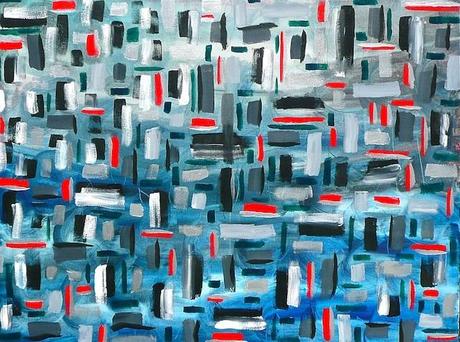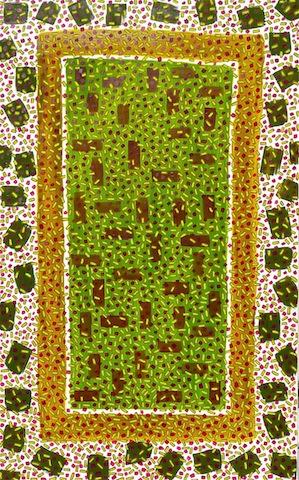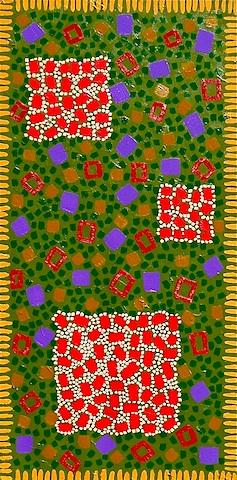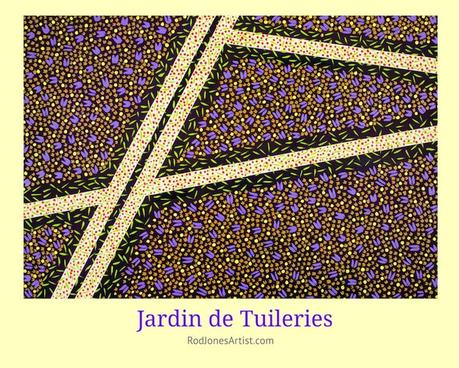After a long successful career as a Commercial Photographer I picked up paintbrush, which is something I did when I was younger. Like any budding artist you have a desire to try many different styles and techniques of painting. I went through this phase somewhat rapidly. One thing did become apparent; I was very much interested in color and shapes. From my earliest paintings, the style I call Receptive Abstract Patternism started to materialize.
Before I get into it too deeply, an interesting note as to the actual derivation of the term…it came from my daughter who was 17 at the time, she was living with my paintings scattered all over the home, my studio and of course hanging on the wall of her bedroom – her choice, not mine. At breakfast she turned to my wife and I and said, “ You should call your work Receptive Abstract Patternism”. I knew instantly that was a pretty insightful name for my style of art.
Ok… so what is Receptive Abstract Patternism exactly?
While most people can understand the word abstract… because it certainly is. Most of my work is non-representational and non-objective. So it’s easy to conclude that my artwork is abstract. The word Patternism is pretty obvious…we often say that the paintings are held together by the continuity and comfort of pattern. As the work has progressed some of these patterns are quite complex. Others are simple. But if you view the vast number of painting I have created you will quickly see the style and many faceted uses of patterns.
Now is the part of the term I am particularly partial to, the word Receptive. You have to be pretty open in your thinking to be receptive, open to being creative. Plus you can’t be overly objective. Of course you can be receptive to outside influences, many representational artists are, and they interpret subject matter with their own unique styles. My Receptive style requires the stimulation to percolate up from my own non-objective thinking.
I never or very rarely ever plan out a painting, they just evolved on the canvas. Colors seem to beget colors, shapes seem to find their own juxtapositions, and the work starts to look cohesive. I can honestly say, it’s just as much fun for me to see how they end up. Many an early morning, I have gone into the studio to see what the previous day’s work yielded. Even the paintings that I thought had the potential of being total disasters somehow managed to save themselves overnight. Some of my work is simple. Not too terribly complicated, but no one can argue that it’s not original.
Historically there have been artists that fervently state that they’re not inspired by anything. I fall in line with those creatives and I can confidently say I do not get any real inspiration from the world around me. Some of my paintings end up with titles with a nature theme. But this is the result of studying the work long after completion. Some of my pieces beg for names…while others are painfully difficult to name. But that is one of the great joys of being an artist.
Rod Jones Artist creator of Receptive Abstract Patternism

This experimental painting signifies the birth of the artist’s Receptive Abstract Patternism. The background is India Ink and the various color elements are acrylic. There is some faint Sgraffito representing leaves.
One of my earliest paintings where Receptive Abstract Patternism started to reveal itself. I was still playing with various mediums so the background of this one is India Ink and then I added acrylic paint which represents the various shapes.

The Rosetta Stone provided a way for modern archeologists to decode the writings of the past. With Rosetta Window this painting explores the idea of the window of your mind providing all the knowledge that is necessary to decode and understand all universal knowledge.
As my style progressed some of my paintings became very busy and complicated. This oil painting uses brush strokes. In fact, some of my more complicated paintings have several thousand brush strokes. Which is a real challenge because I am not typically that patient. A writer once jokingly said, ”I wonder what goes on in your mind?”

Many times in the context of personal relationships what we hold within our minds and hearts affects the dynamic of the expression of love. The painting Interiors demonstrates this by the three forms being very individual but very connected by the very “fabric” of their being, while outside forces attempt to make their borders but cannot succeed.
As you can see this painting is filled with intense color and I’m starting to incorporate different elements. This painting actually started out as a horizontal. If you look at the border you can see that it lines up that way. But after completion it became a vertical and then earned its name.

The Shard – The web of the city trying to restrain London’s Shard as it breaks free of the congestion of the city and the people below. Letting the world know that it has arrived and offers a breathtaking view for those who are willing to scale its heights.
A more recent work where I am incorporating better defined shapes and blending in patternism. This painting actually earned its name while listening to my favorite British classical station via the Internet, and the building The Shard was all they talked about.

Jardin de Tuileries-The painting owes its name to the Tuileries Garden. It is a public garden located between the Louvre Museum and the Place de la Concorde in the 1st arrondissement of Paris.
Oblique and non-oblique in form which enlightens senses.
As my work has become more popular it was suggested that I start developing some posters. These were initially designed for specific venues but I have now made them available for sale. Just as a side-note…this is one of my wife’s favorite paintings. She is my muse and I trust her critical eye. She is quite creative in her own right.

